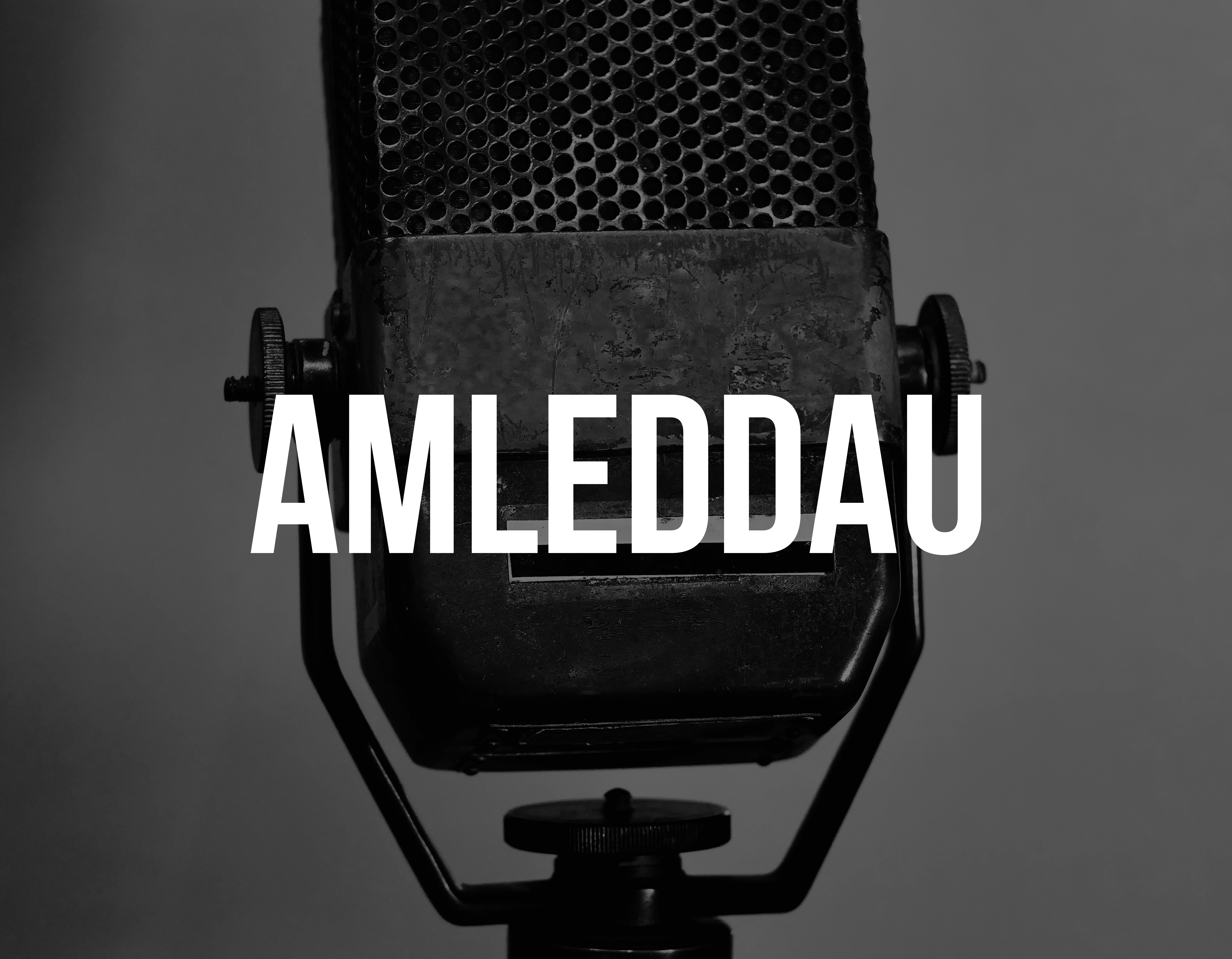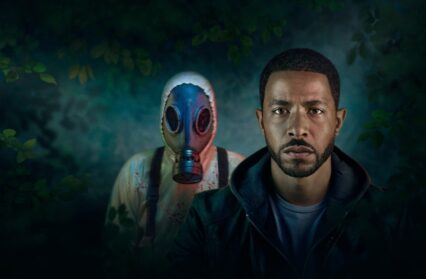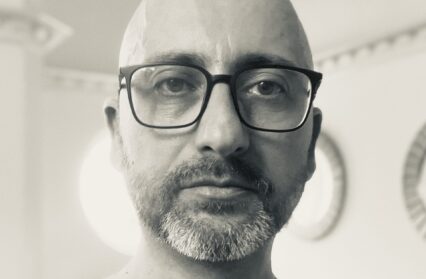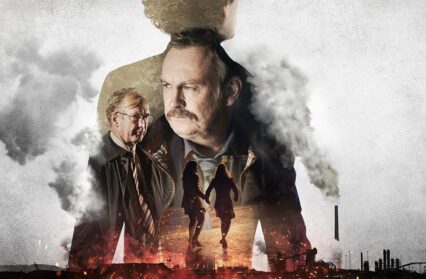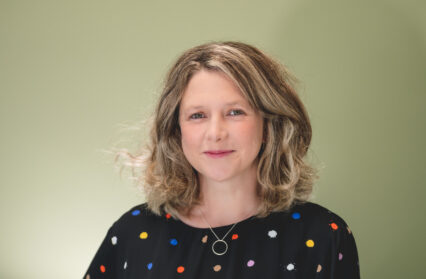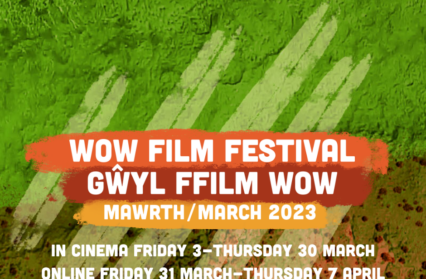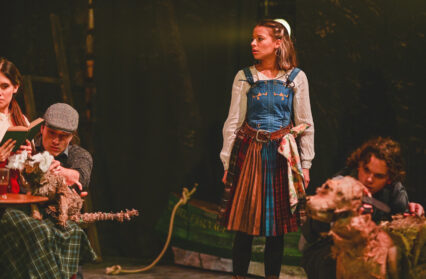Artist and Composer John Meirion Rea tells us more about his new work, Amleddau, an experimental film that explores the history of broadcasting in Wales through archive and soundscapes commissioned by BBC Radio Cymru.
Tell us a bit more about Amleddau, how did it come about?
John Meirion Rea: Amleddau represents an evolution in my creative practice, a move away from composing ‘pure music’ towards an interest in combining composition with field recording, soundscape, film, and immersive presentation. The initial inspiration for this approach was the discovery of the work of the early pioneers in sound & film montage and radio-art, such as the Hörspiel, or ‘hear plays’ of Walter Ruttman, in 1920’s Germany, particularly the sound work Wochende (Weekend), and his ‘City Symphony’ montage film Berlin – Symphony of a Great City. I was also fascinated by the experimental ‘Radio Ballads’, created for the BBC radio in the late 50’s by Ewan MacColl.
This interdisciplinary approach first came together with the presentation of Atgyfodi (vb revive, vb resurrect), a collaboration with St Fagans Museum of History sound archives, and The BBC National Orchestra of Wales. I was struck by the emotional power of what I heard in the archives; especially the musicality of our dialects, and that these were the lives of ‘real’ people, singing local songs and telling their life stories. It was here that the beginnings of an idea formed for a performance work and installation, based on the powerful emotional resonance of the recordings, also the sound and texture of the recorded media, such as the ‘crackle’ of the Edison Cylinder, and the ‘Phonograph’, and the ‘wow and flutter’ of the tape. I also felt a strong desire to share this hidden history!
Atgyfodi was performed in October, 2018 in St Fagans, alongside a series of sonic interventions in the historic buildings, based on field recordings captured in the original locations, and symbolic oral history recordings from the archive. By enlivening the inner acoustics of the buildings, a strong sense of the original social context emerged in quite a powerful way, and I became aware that combining the soundscapes with the unique ‘sonic signature’ of the structures themselves could be returned to their original locations as radio-artworks. I was lucky enough to realise this idea, in the form of podcasts for BBC Radio Cymru, and BBC Sounds.
Spending time in the Museum also led to memories of visiting St Fagans with my late Father, and I happened to be scanning my family’s photographic ‘archive’ at the same time as listening to the Museum archives, and it occurred to me that they both represented the same thing: belonging, a sense of place, and my identity as a Cymro. I saw the Centenary of the first Welsh language broadcast this year as an ideal opportunity to revisit these creative ideas and approaches, and for a further collaboration with BBC Radio Cymru.
How has the project evolved throughout your time working on it?
John Meirion Rea: As with Atgyfodi, Amleddau began with a period of research, and lot of listening! I already had ideas that I felt would be significant in the narrative of the work, such as Tynged Yr Iaith, (‘The Fate of the Language’), the iconic lecture by Saunders Lewis, that inspired the protest movement in the early 60’s, and the forming of Cymdeithas Yr iaith. Also, an interview with Gwynfor Evans in which he talks about the reasons behind his threat to fast to death over the Fourth Channel/S4C. I saw these as integral to the history of the development of radio and broadcasting in Cymraeg/Welsh, but also to the history of Cymreictod/Welshness more generally. The battle that was fought to ensure a media presence for Cymraeg/Welsh is a history that needs to be remembered, and is a central theme in Amleddau.
Another significant thread is the birth of the medium itself, and the emancipation of sound from its point of origin, as with the advent of recording, and how the history of Marconi’s experiments in Wales are a significant part of this history; especially the less familiar connections, such as the patronage of Caernarfon born William Preece. It is Preece who financed Marconi’s work in his capacity as Chief Engineer for the Post Office in Wales, after London had turned his ideas down, and this pioneering work has strong resonances with the Welsh landscape, such as the transmitter building in Cefn Du near Caernarfon, and the tests that were undertaken between Lavernock Point, and Flatholm in 1897, a unifying motif in the visual narrative.
The opening sequence begins with pure soundscape; a Musique Concrète montage, of layered tape machine ‘test tones’, abstract Edison Cylinder noise, morse code tutorial 78’s and geographically specific field recordings, as if radio itself is emerging from the ‘ether’! Here we see a continuous drone shot, which traces the journey of Marconi’s first signal between Lavernock Point and Flatholm Island, which is then joined by a manipulated recording of an old upright piano, which is treated as a ‘sound object’, rather than in a conventional compositional way. The voices of the archive slowly emerge from this soubdworld, combining recollections of the early pioneers in Wales, such as the voices of long retired BBC staff, as well as those who fought for the Cymraeg/Welsh language voice to be heard, such as Sam Jones, and his valuable work in establishing the BBC in Bangor.
Cardiff is also a very important part of this history, and the second section of the radio-artwork is a celebration of our Capital City. I thought it significant that the renowned Baritone Mostyn Thomas sang the first words of the traditional song Dafydd Y Garreg Wen in the Castle Picture Theatre on February the 13th, 1923, a stone’s throw away from the new BBC Central Square Building. The buildings that have been occupied by the BBC in Cardiff over the past hundred years are an important theme in the film, from these early days in Castle St. I am also very proud of the fact that we honoured Betty Campell here, a true Cardiffian, and her story features as an important part of the radio-art soundscape. There are many kinds of Cymreictod/Welshness, and I felt strongly that Amleddau should reflect this, especially contemporary ’Urban Welshness’, in all its richness.
How important is that balance between musicality and language/dialect in Amleddau?
John Meirion Rea: Dialect is at the core of Amleddau; it all begins with the voices really, not only because their historical importance, but also because of their intrinsic musicality, again. It is almost as if what is being said becomes secondary to how it is being said, in combination with soundscape, music, and the visual interpretation. The texture of the recorded medium, and the musical ‘flow’ are often ‘collaged’ in the foreground, and one can get an abstract sense of the narrative, in a way that has parallels to how we experience a piece of ‘pure’ music.
The musical structure, and direct responses heighten certain sections of the work, and enhance the emotional narrative; when we hear Gwynfor Evans speaking of the battle nearly being won over the editorial control of radio in Wales, there is a musical resolution, that begins with a recapitulation of the opening piano theme, and mirroring the ‘tonal centre’ of his speaking voice, fully scored for string orchestra. The narrative, and the musical development in Amleddau work hand in hand, with different elements within the soundscape, music, and visual narrative becoming foregrounded at different times: sometimes as statement, sometimes as a response. As with Atgyfodi, the intention is that several ideas are being presented simultaneously to create an immersive experience.
What were the biggest challenges in creating the film?
John Meirion Rea: The main challenges in creating the visual response were how to contextualize the soundscape and add a ‘layer’ of meaning, whilst not allowing it to take over, or to lose the ‘flow’ of the soundscape. The idea that emerged was that the visual journey should focus on landscape, and places of significance, and these ideas were developed in a very similar way to the Atgyfodi performance work.
Sometimes there are specific visual references that coincide thematically with the archive voices, and soundscape, such as the 1962 Pont Trefechan protest in Abersystwyth, which was a direct response to Saunders Lewis’ Tynged Yr Iaith broadcast, also the building that housed Marconi’s first transmitter in Cefn Du, near Caernarfon. The film also uses a more abstract visual language, such as the shots of the streets of Cardiff, again a sense of place, and people, and time passing; the ‘soft ambiences’ of Guy Debord perhaps, conveying a sense of place, and an ‘urban Welshness’. Also, the material, and texture of broadcasting mirror the abstract soundscape, with shots of vintage radios, and archive film, which we were fortunate to be able to shoot in the BBC100 Exhibition in Amgueddfa Cymru.
What was your experience of working on a project of this scale (I’m thinking of the different elements involved here)?
John Meirion Rea: It was quite forbidding at first, I was quite daunted by the scale of the commission and wondered where to begin! As the sound work brief was for a work of over fifty minutes, the difficulty was how to sustain interest for the listener, and how to structure a soundscape work that was as long as Mahler Symphony! An overall structure emerged throughout the listening process, with the different sections, or ‘movements’, coming together based on an overall idea of how the archive voices, soundscape and musical narrative worked with one another. This had to be edited down to make the film a reality, though the language for the audio-visual interpretation developed in tandem with the soundscape, adding context, and a strong sense of Cymrectiod/Welshness. The help of collaborators, cinematographer and photographer Huw Talfryn Walters and editor Ric Bower was invaluable in the development of the visual style.
How do you hope Amleddau will develop?
John Meirion Rea: My hope for Amleddau is to create an immersive interpretation of the soundscape, using binaural surround-sound, perhaps in the form of an installation, as it leans more towards this kind of presentation I think, time will tell!
Lastly, what will you be working on next?
John Meirion Rea: I was very fortunate to receive ‘Research and Development’ funding from The Arts Council of Wales during the lockdown of 2020/2021 for the piece | təʊl |, based on a field recording of the call to service bell in Nangwyllt Church in Cwm Elan. The story of this bell struck me as significant, as it was taken from the older Church that now lies under the Caban Coch Reservoir and has a much deeper cultural resonance. I was fortunate to have the opportunity to collaborate with percussionist Dame Evelyn Glennie on an online immersive realisation of the work, which is, in essence an investigation into pure ‘sound’ and its ‘signalling’ function. I was interested in investigating ‘spectral’ analysis techniques based on the bell recording as a starting point, as a homage to Jonathan Harvey’s Mortuous Plango, Vivos Voco. My hope is to be able to present this as a live experience, combining elements of performance with installation in future.
Amleddau was broadcast on the Centenary of the first broadcast in Cymraeg/Welsh on February the 13th, 2023, then shown in The Reardon Smith Theatre, in the National Museum of Wales, Cardiff in June of this year.
Links:
Radio-Artwork:
Atgyfodi :
BBC Sounds Podcasts:


